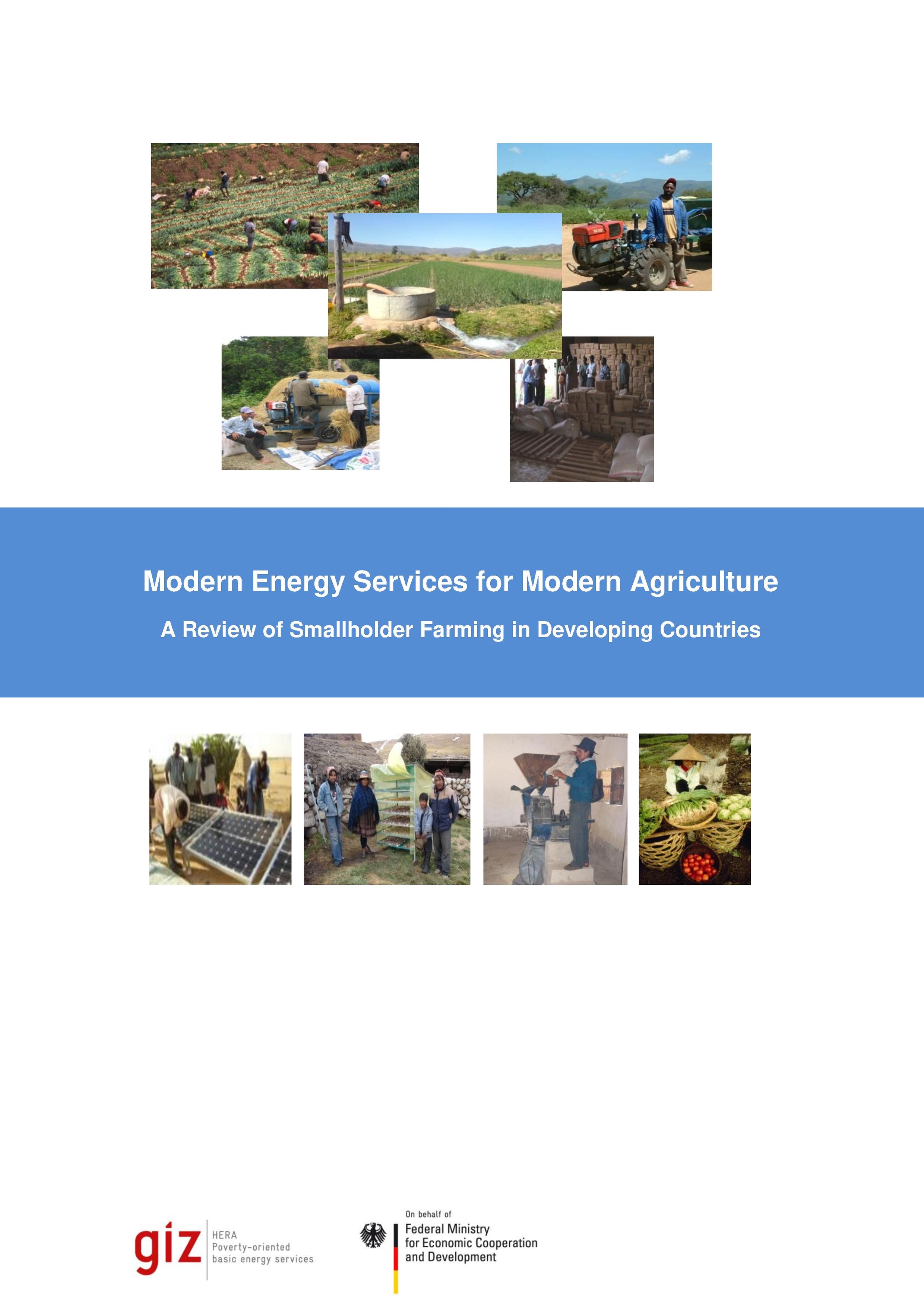Knowledge fuels change - Support energypedia!
For over 10 years, energypedia has been connecting energy experts around the world — helping them share knowledge, learn from each other, and accelerate the global energy transition.
Today, we ask for your support to keep this platform free and accessible to all.
Even a small contribution makes a big difference! If just 10–20% of our 60,000+ monthly visitors donated the equivalent of a cup of coffee — €5 — Energypedia would be fully funded for a whole year.
Is the knowledge you’ve gained through Energypedia this year worth €5 or more?
Your donation keeps the platform running, helps us create new knowledge products, and contributes directly to achieving SDG 7.
Thank you for your support, your donation, big or small, truly matters!
Difference between revisions of "Renewable Energy Resources in Powering Agriculture"
***** (***** | *****) (Created page with " = Background<br/> = Renewable Energy is “energy derived from natural processes (e.g. sunlight and wind) that are replenished at a faster rate than they are consumed. Solar...") |
***** (***** | *****) |
||
| Line 125: | Line 125: | ||
<br/> | <br/> | ||
| + | |||
= Further Readings<br/> = | = Further Readings<br/> = | ||
| Line 131: | Line 132: | ||
*[[Portal:Powering Agriculture|Portal:Powering Agriculture]]<br/> | *[[Portal:Powering Agriculture|Portal:Powering Agriculture]]<br/> | ||
*FAO Study: [[Opportunities for Agri-Food Chains to become Energy-Smart|Opportunities for Agri-Food Chains to become Energy-Smart]]<br/> | *FAO Study: [[Opportunities for Agri-Food Chains to become Energy-Smart|Opportunities for Agri-Food Chains to become Energy-Smart]]<br/> | ||
| − | *[[File:Energy_Services_for_Modern_Agriculture.pdf|Energy Services for Modern | + | *[[File:Energy_Services_for_Modern_Agriculture.pdf|Energy Services for Modern Energy]]<br/> |
Revision as of 12:55, 1 April 2016
Background
Renewable Energy is “energy derived from natural processes (e.g. sunlight and wind) that are replenished at a faster rate than they are consumed. Solar, wind, geothermal, hydro, and some forms of biomass are common sources of renewable energy." (by International Energy Agency)
On our planet Earth, there are three sources for renewable energy: solar radiation, heat from the Earth’s core (geothermal energy) and gravitational force resulting from planetary movements (tidal power). Energy resulting from solar radiation accounts for about 99.9% of all energy available on Earth.
Even if the renewable energy resources are distributed throughout the world, location plays a huge factor when deciding which resource should be applied and in what level of intensity. Solar and wind energy resources are intermittent in nature – this indicates that not all resources are suitable for each location, purpose or application. Site-specific analysis is hence crucial. In case of solar energy, equatorial regions are more suitable than far Northern and Southern regions.
Generally speaking, each location has some sort of renewable energy potential. Sometimes this potential is directly visible and at other times different resources have to be combined. However, there is almost always a way to tap nature’s vast energy supply. To find out about the potential around your area, look for renewable energy projects nearby or talk to your national institutions to access studies on different potentials.
Overview of Energy Resources and Technologies
Check out the video lecture on energy resources and technologies by Prof. Ramchandra Bhandari, TH Köln – University of Applied Sciences:
Further information on the mentioned MOOC on "Powering Agriculture - Sustainable Energy for Food" and related materials you can find here.
| Energy source |
Converstion to |
Most applied technologies and applications |
Remarks |
|---|---|---|---|
|
|
| |
|
Wind energy |
|
|
Option for energy intensive processing activities |
|
|
Option for energy intensive processing activities | |
|
|
| |
|
Combine fossil fuel-fired generators with wind or solar electrical power |
|
|
Conclusion
- Use of renewable energy in rural remote areas of many developing countries could help farmers to increase agricultural productivity as well as to earn more money by value addition to their produces (e.g. controlled drying of fruits and vegetables, cheese production from milk, off-seasonal production of fruits and vegetables with irrigation, etc.)
- The potential for using REs in the agricultural value chain is plentiful and often has many advantages compared to conventional technologies like diesel generators.
- A high level of integration of RE into an agricultural process can lead to high efficiencies, low environmental impact and low production costs.
- There is always some sort of RE resource available in any location, it is just important to choose the adequate source or a good combination of sources.




















